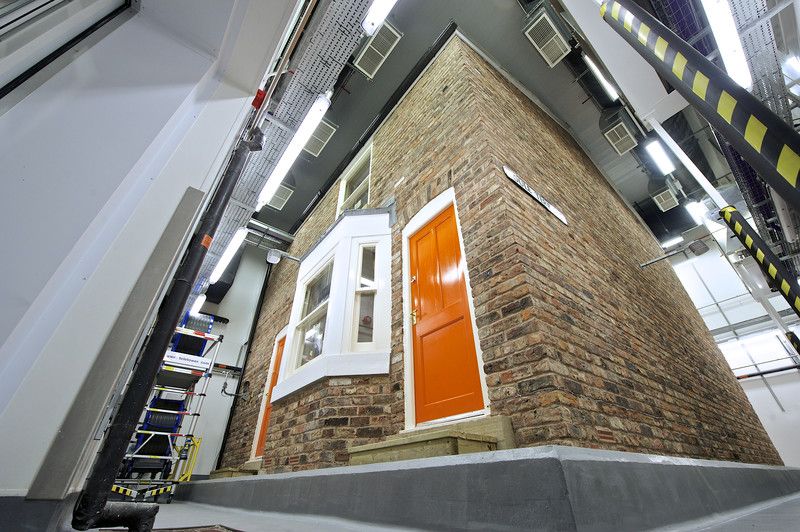Sector - Energy, Fuel & Utilities
Salford Energy House 2.0 scheduled for 2021
10 Jul 19

Energy House 2.0, a state-of-the-art buildings research facility worth £16M, will be constructed at the University of Salford in early 2020 with completion scheduled for spring 2021.
Planning permission for the scheme was secured back in May 2018 and the University has since procured the contractor, Bowmer & Kirkland, to complete the design and construction of the facility through funding from the European Regional Development Fund and the Office for Students.
AECOM are providing Project Management and Cost Management Services during the construction of the facility which, itself, will investigate the future of housing by analysing off-site construction, smart homes, and energy use.
Dr Richard Fitton, Technical Research Lead for Energy House Laboratories, stated: “The development of Energy House 2.0 has required considerable support from the University, industry and the Greater Manchester Combined Authority. The team are grateful for the interest and support the project has generated.”
Energy House 2.0 will have two environmental chambers able to regulate temperatures between -20C and 40C while also simulating weather conditions such as rain, wind, snow, and solar light which can replicate the environmental conditions experienced by 95%of the global population.
Professor Will Swan, Director of Energy House Laboratories, stated: “Once work is complete our facilities will be globally significant. We have undertaken significant work in the UK over the last 10 years, but these new facilities give us major opportunities to work with international partners on major global challenges.
“This facility for whole buildings testing and research and will further the development of energy efficient technologies for the built environment. From a UK perspective we are very much driven by the Industrial Strategy and will be working with partners from industry to support the delivery of a low-carbon built environment.”
Salford Energy House 1.0 has enabled key changes to the way that the UK housing stock saves energy and becomes energy efficient, driven by attempts to reduce global CO2 emissions in line with recent pledges and limitations.
If you would like to read more articles like this then please click here.
More Energy, Fuel & Utilities News
- East Anglia THREE offshore converter station jacket beds down in North Sea
2 Sep 25
ScottishPower Renewables’ first offshore high-voltage direct current (HVDC) converter station has been successfully installed in
- Nuclear fusion boost as government sets to unblock planning rules
4 Aug 25
The new rules will provide clarity to developers and streamline the planning process for fusion.
- Major boost for mine water heat revolution
29 Jul 25
New study shows 87% of coalfield boreholes succeed.
-
Sector Press Releases
- How to avoid disputes in the Construction Industry
Disputes in construction are unavoidable but in recent years these disputes have fallen.
- Join us on Wednesday, 10th April at our first Cable Quality breakfast seminar
What’s the value of quality to you? This year we have launched a series of Cable Quality breakfast
- The global solar energy market, rapid growth, and a significant opportunity for cable manufacturers
The global market for photovoltaic (PV) solar energy systems is growing rapidly whichrepresents a considerable opportunity for cable
- Weholite structures awarded HAPAS certificate in first for industry
Asset International achieves HAPAS accreditation for pipe structures larger than 900mm.
- ALS Environmental extension to scope granted by UKAS
Now accredited for Pseudomonas aeruginosa and TVC testing in endoscopy and dialysis waters.
- Newport firm invests in staff to ensure continued success
A Newport manufacturer leading the way with staff development is reaping the rewards of investing in the skills
-
Sector Case Studies
- Top Dos and Don’ts – Cable Delivery, Pulling and Installation
Although present everywhere, cables seldom impact their users.
- How third-party testing and certification improves quality and safety of cable products
Third party, independent testing and certification is becoming increasingly important.
- How to write a good cable specification
The easiest, low risk way to procure cables is to specify products that have proven
- The importance of specifying quality cable for your projects: Why should you, the consultant, recommend independently-verified cable?
Specifying quality cable for construction projects may not be top-of-mind when preparing building specifications.
- Do you know what standards are required for control cables?
Currently YY, SY and CY control cables are not governed by any specific standards, which
- No-dig Pipe Jacking Technology adopted on Aylesbury Housing Development
Site: Aylesbury Housing Development, Buckinghamshire Contractor: Chiltern Thrust Bore Products Supplied: DN450mm Precast Concrete Jacking Pipe A no-dig






